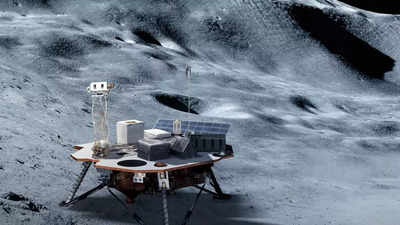- News
- Science News
- Finland is the 53rd nation to join the Artemis Accords for lunar exploration — check full list
Finland is the 53rd nation to join the Artemis Accords for lunar exploration — check full list
Finland has joined the Artemis Accords as the 53rd country, committing to peaceful, responsible, and sustainable space exploration. This agreement was formalized during the Winter Satellite Workshop 2025 in Espoo, Finland. Finland's membership underscores the importance of international cooperation with NASA and other countries in advancing space exploration and protecting the space environment for future generations.
The Artemis Accords is an international framework for space exploration that grows its member nations committed to peaceful, responsible, and sustainable exploration beyond Earth. On 21 January 2025, Finland became the 53rd country to sign up for this historic effort. This represents the growing global cooperation in further advancing space exploration, with a joint focus on safety, transparency, and preservation of space for coming generations. This ceremony to sign the memorandum marked the Winter Satellite Workshop 2025 in Espoo, Finland as another milestone forward for the nation of Finland working with NASA and being included in the Artemis program.
Finland joins Artemis Accords as 53rd nation to boost global space cooperation
Finland became the 53rd country to sign the Artemis Accords according to the recent reports, a great step in the history of global space exploration. This step will strengthen NASA's mission to explore space peacefully, collaboratively, and responsibly. The signing ceremony was held at the Winter Satellite Workshop 2025 in Espoo, Finland, an elite gathering of space experts and professionals from all over the world.
This agreement makes Finland the latest addition to the list of countries that are committed to adhering to the principles of the Artemis Accords, which promote safe, responsible, and sustainable space exploration. Finland's space sector has long been recognized for its contributions to space technology, with Finnish companies and research institutions playing key roles in advancing innovations in space exploration. Economic Affairs Minister Wille Rydman discussed Finland's plans to join the Artemis Accords, referring to the collaborative relationship with the United States that would not only strengthen Finland within the space family but also usher in new opportunities and development for space industry in Finland. This relation is expected to help Finland find its place again in the New Era of Exploration by NASA - specifically in how it relates to the Artemis program.
Finland signs Artemis Accords, embracing international cooperation
Established in 2020, the Artemis Accords are spacefaring nations that collaborate on the basis of mutual understanding for exploring more, such as the moon and Mars, in a peaceful, open, and sustainable operations manner. Accords commit to working together toward sharing scientific data, protecting a space environment, and promoting safe operational practices. With membership in this international coalition, Finland subscribes to the core principles established and strives for closer cooperation in the exploration of outer space while holding outer space open for use in the benefit of all generations to come.
Artemis Accords and Finland's role in global space exploration
Associate Administrator of NASA Jim Free mentioned that Finland has joined the program since the space environment can be protected in the future, assuring that everything remains safe by common effort between the two participating parties. Mr. Free emphasised that this is why Finland becomes one with a lot more countries aiming to share resources in achieving future opportunities and dealing with the consequences of space activities.

Source: NASA
Other Artemis Accords membership list
The Artemis Accords were launched in 2020 and have been growing at a very rapid pace, bringing nations together to explore space for peaceful, sustainable, and collaborative purposes around the world. Led by NASA, this initiative focuses on international cooperation in space exploration, particularly on the Moon and Mars, among other places. In fact, there are 53 countries that have joined the Artemis Accords as a sign of growing commitment toward responsible space exploration as of early 2025.
The effort is both scientifically knowledge-driven and attempts to preserve space for future humanity so that it's shared everywhere in the benefits of space research. The induction of these nations underlines how global cooperation to advance human life in space continues to grow with importance. Below are the updated signatories of Artemis Accords membership.
Also Read | 7 brightest stars visible to the naked eye from Earth and their significance
End of Article
FOLLOW US ON SOCIAL MEDIA
Hot Picks
TOP TRENDING
Explore Every Corner
Across The Globe












